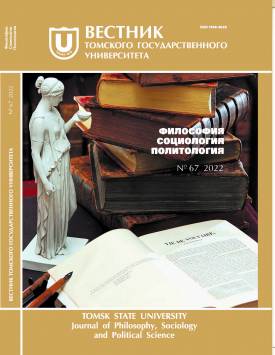“Nast’a is not a migrant, Nast’a belongs to us!”. Migrants from Russia in Slovak migration discourse
International migration is a relatively new topic in Slovak political discourse. Slovak politicians started discussing migration only in 2015, and in an extremely negative way. Most Slovak politicians saw the migration processes in 2015 and 2016 as a threat to domestic cultural and national identity, even though Slovakia was not a destination country for refugees from Africa and the Middle East during this period. Slovak politicians have stressed the need to defend the country against migration processes, even though the number of migrants residing in Slovakia is gradually increasing. At the same time, 2015 can be seen as the beginning of a migration discourse that involved not only politicians but also the general public. Until this period, migration was mostly discussed by academics and scientists. In our article, we focus on a particular group of migrants as an object of migration discourse. These are migrants with origins in the Russian Federation. We choose this group to find out how a group of migrants who are not distinguished from the majority society by physiognomic features or by a different religion or culture is presented in political discourse. We are interested in answering the question of how migrants from Russia are presented in Slovak migration discourse. We believe that due to the specific characteristics of migrants from the Russian Federation, such as related language, religion, and culture, some migrant groups are perceived neutrally or positively by the domestic political elite as well as by the majority of society. In addition to the above-mentioned characteristics, the socio-economic structure of Russian migrants also influences the positive perception of migrants originating in Russia. There are several successful businessmen, scientists, academics, and sportsmen among the migrants from Russia with long-term residence in Slovakia, which has the same influence on their overall perception by the domestic society. We arrive at our findings through discourse analysis. The corpus under study consists of publicly available texts and statements published in media, in parliamentary debates, and on social media. We included in the corpus texts that were published until October 2021. We completed the research in October 2021, so our conclusions do not include any changes in migration discourse after that date. Although the perception of migrants as a threat prevails in Slovak migration discourse, we argue in this article that until October 2021 migrants from the Russian Federation were not presented as a threat in public discourse. On the contrary, using the example of biathlete Anastasiya Kuzminova’s achievements, the discourse can even observe the marginalisation of her migrant background. Thus, the successes of some migrants of Russian origin may have an impact on the creation of a positive image of the entire national category of migrants. The article points out that the ability of migrants to integrate into the autochthonous society is an important factor in the attitude of the native population towards immigrants, although the topic of integration is marginalised in the Slovak migration discourse. Russian migrants are well integrated in Slovakia; there are no reports of possible problems with their integration. We consider the recognition of Russians living in Slovakia as a national minority to be important in the perception of Russian immigrants so that the domestic public can perceive Russian immigrants as an autochthonous part of society. The authors declare no conflicts of interests.
Keywords
migration, immigration, discourse, Slovakia, RussiaAuthors
| Name | Organization | |
| Stefanftk Radoslav | University of Economics in Bratislava | radoslav.stefancik@euba.sk |
| Seresova Terezia | University of Economics in Bratislava | terezia.seresova@euba.sk |
References

“Nast’a is not a migrant, Nast’a belongs to us!”. Migrants from Russia in Slovak migration discourse | Tomsk State University Journal of Philosophy, Sociology and Political Science. 2022. № 67. DOI: 10.17223/1998863X/67/21
